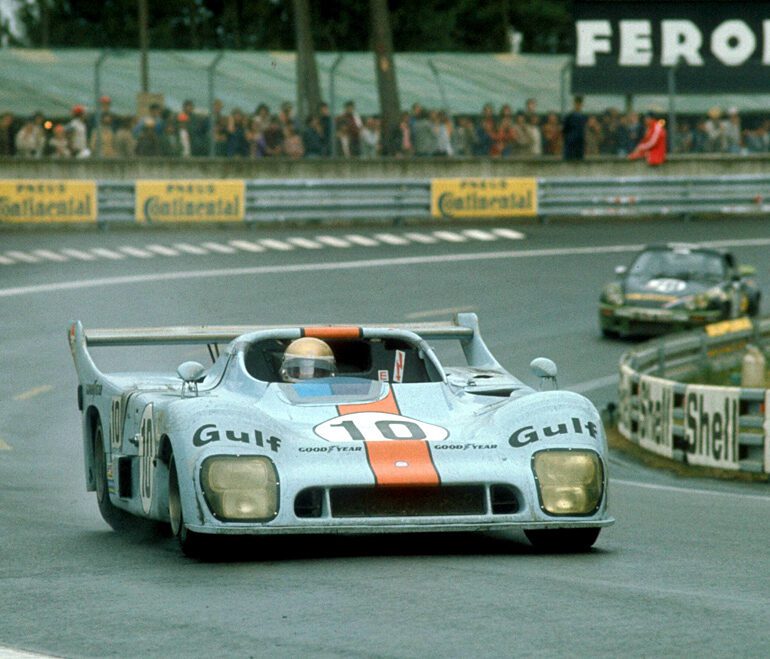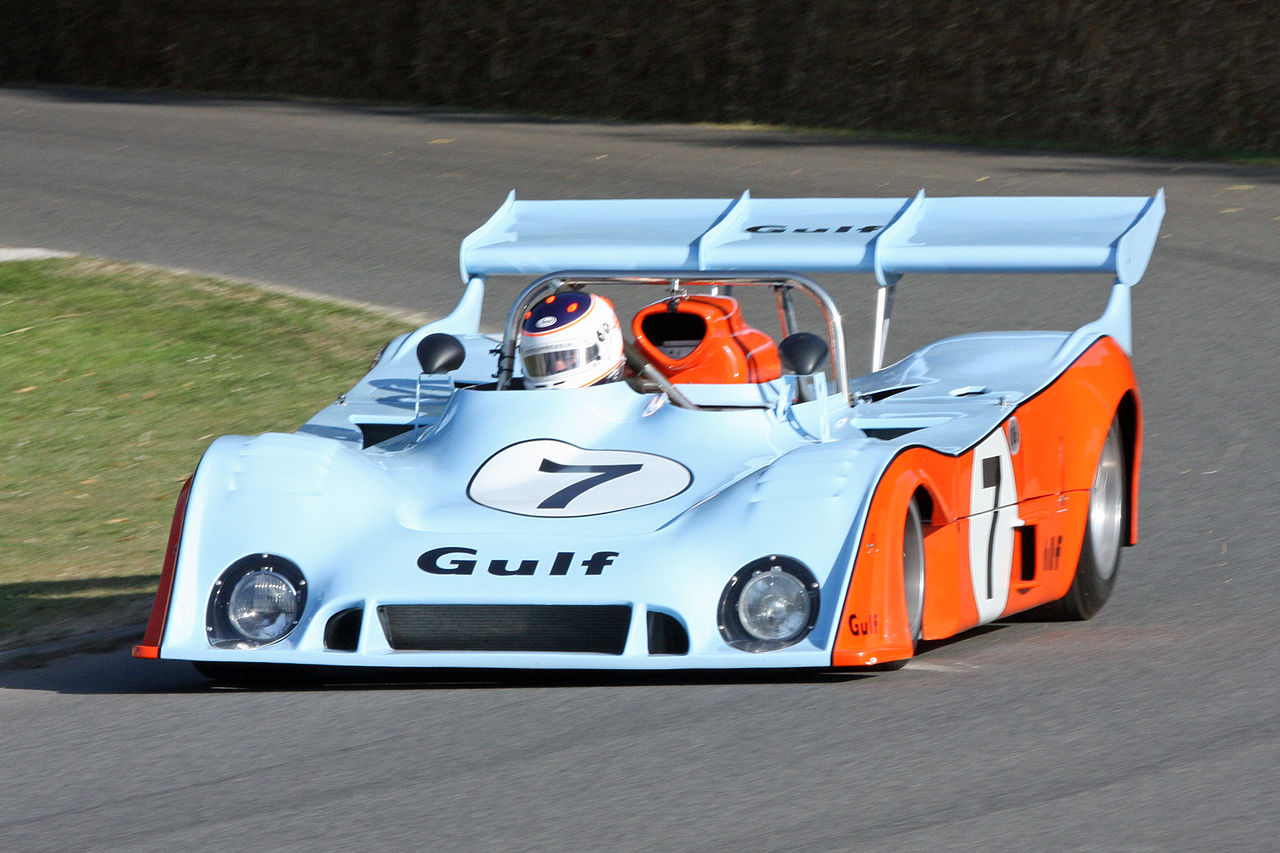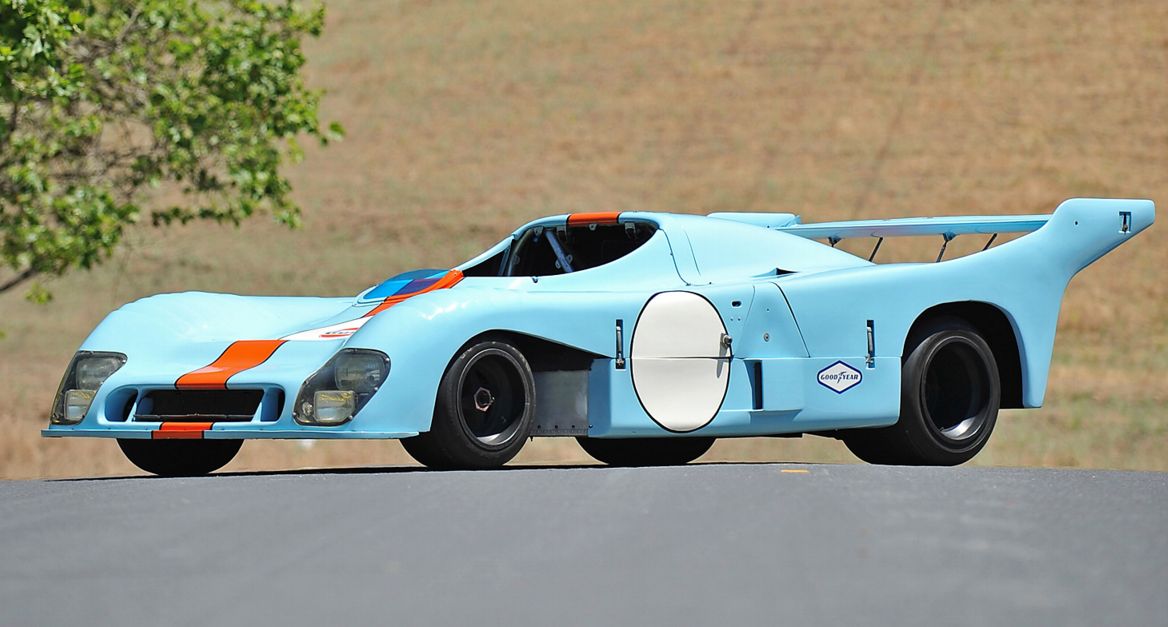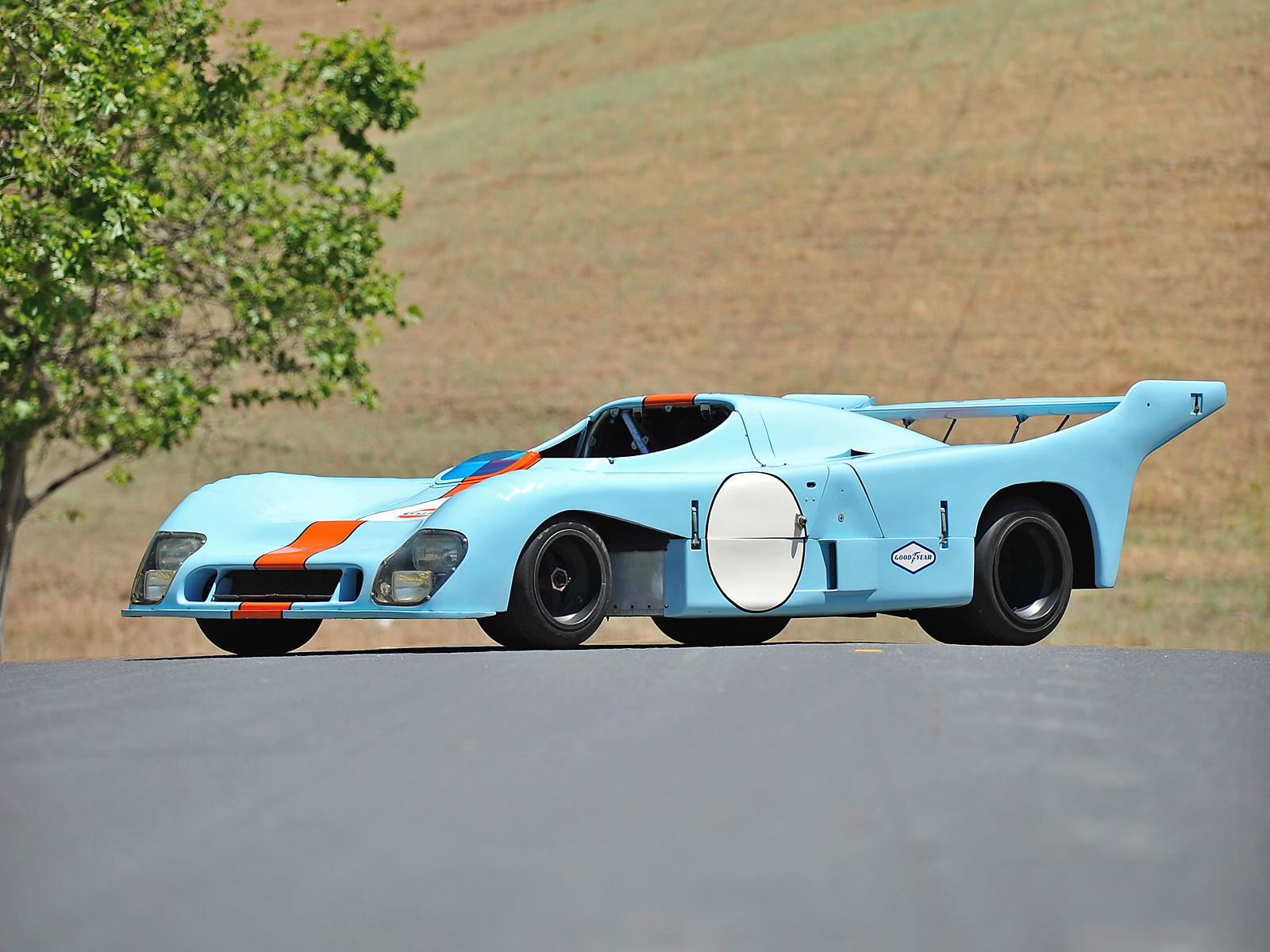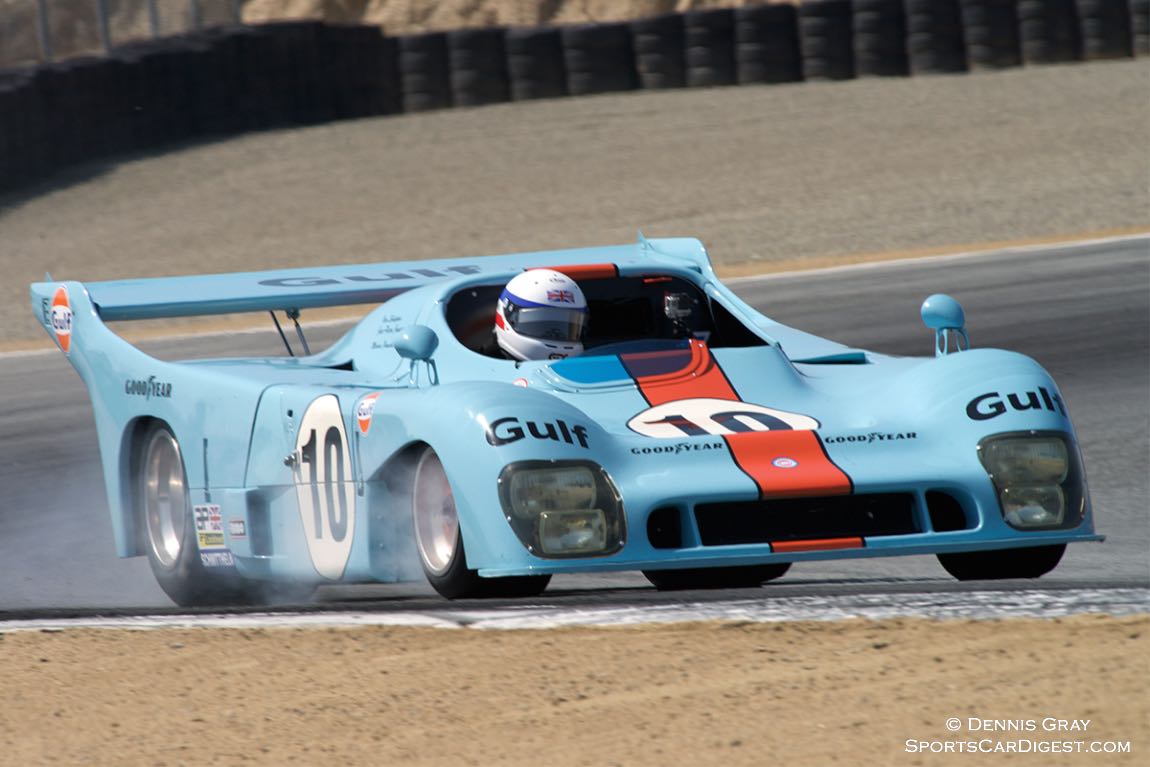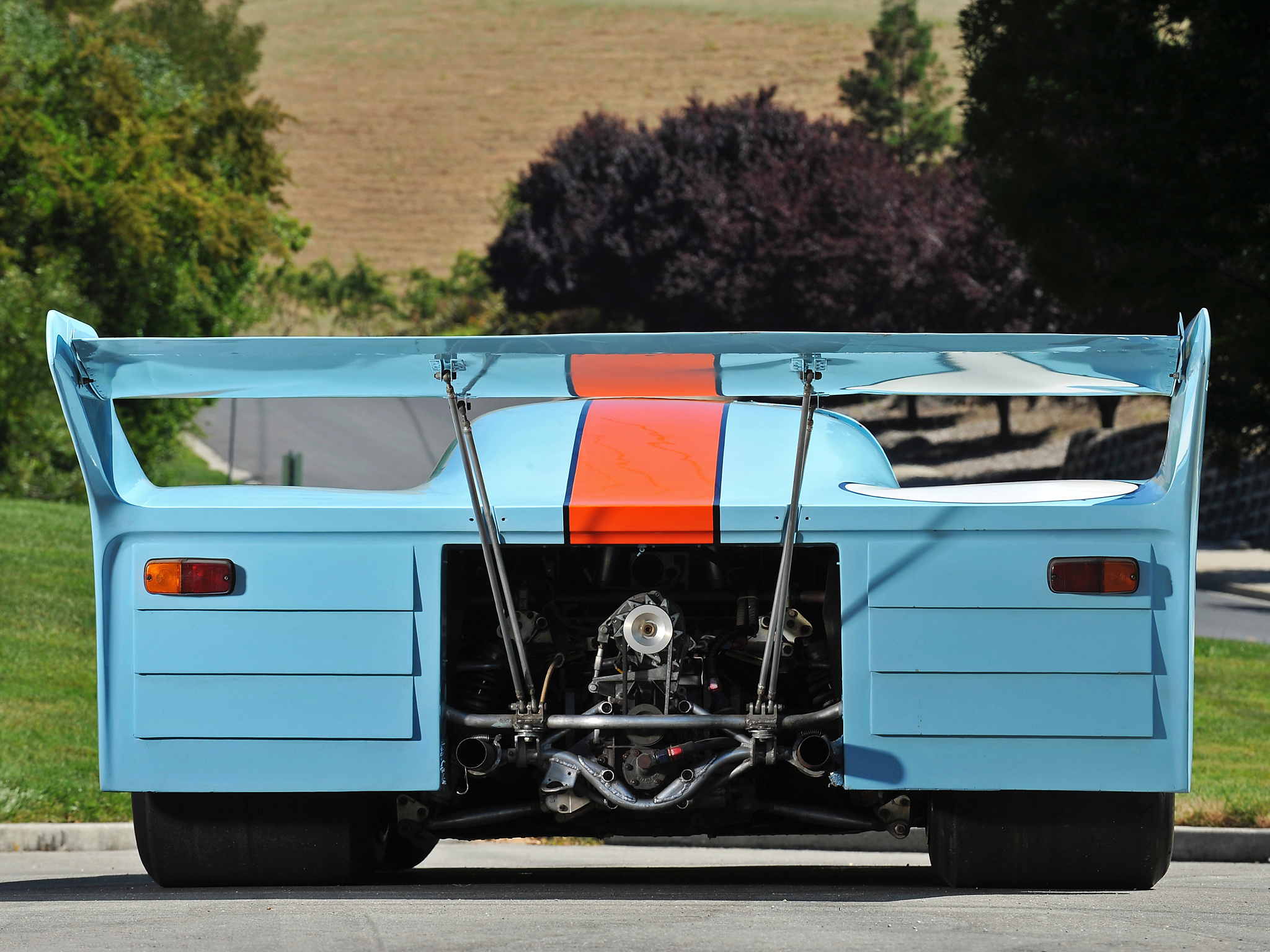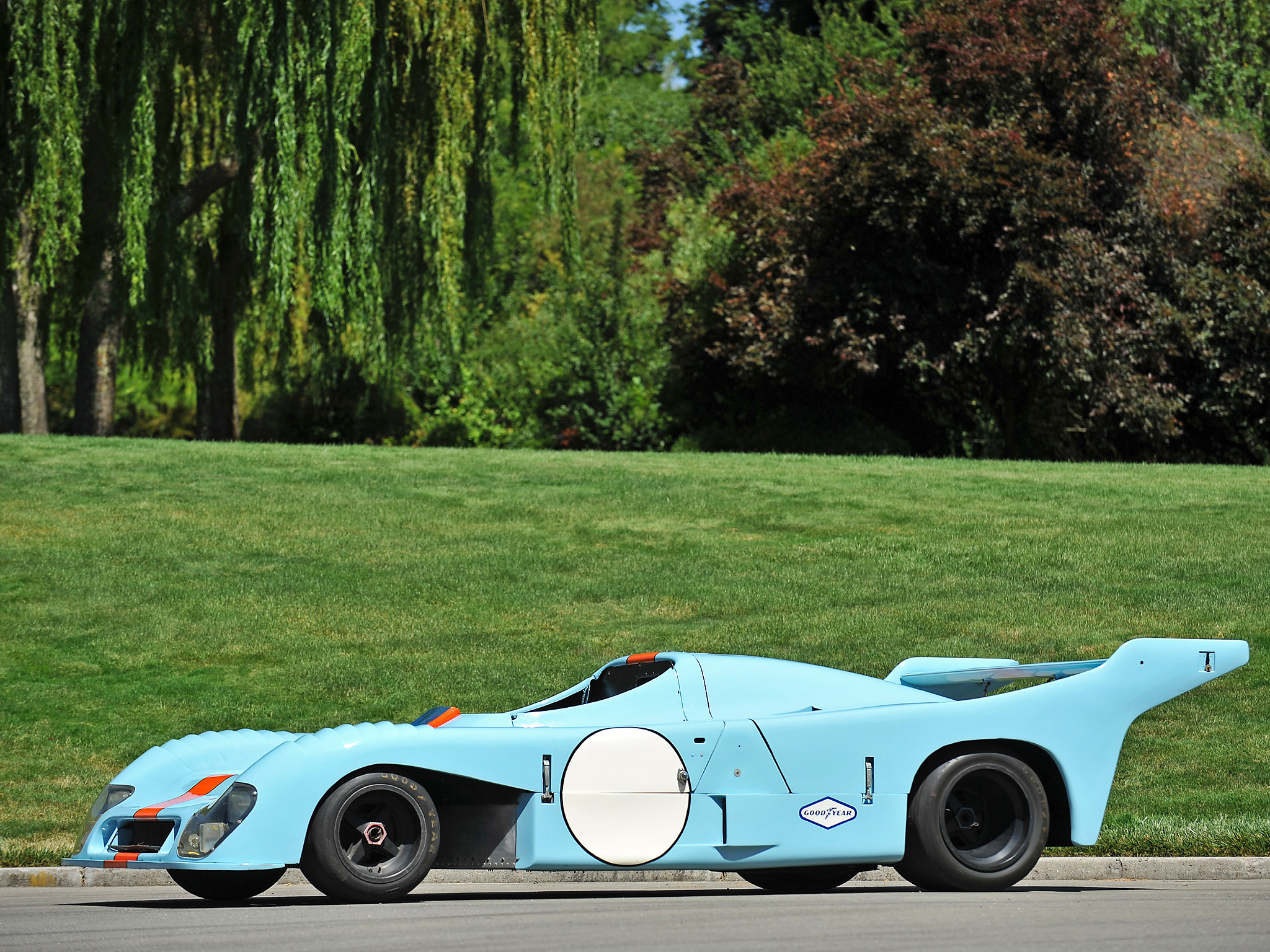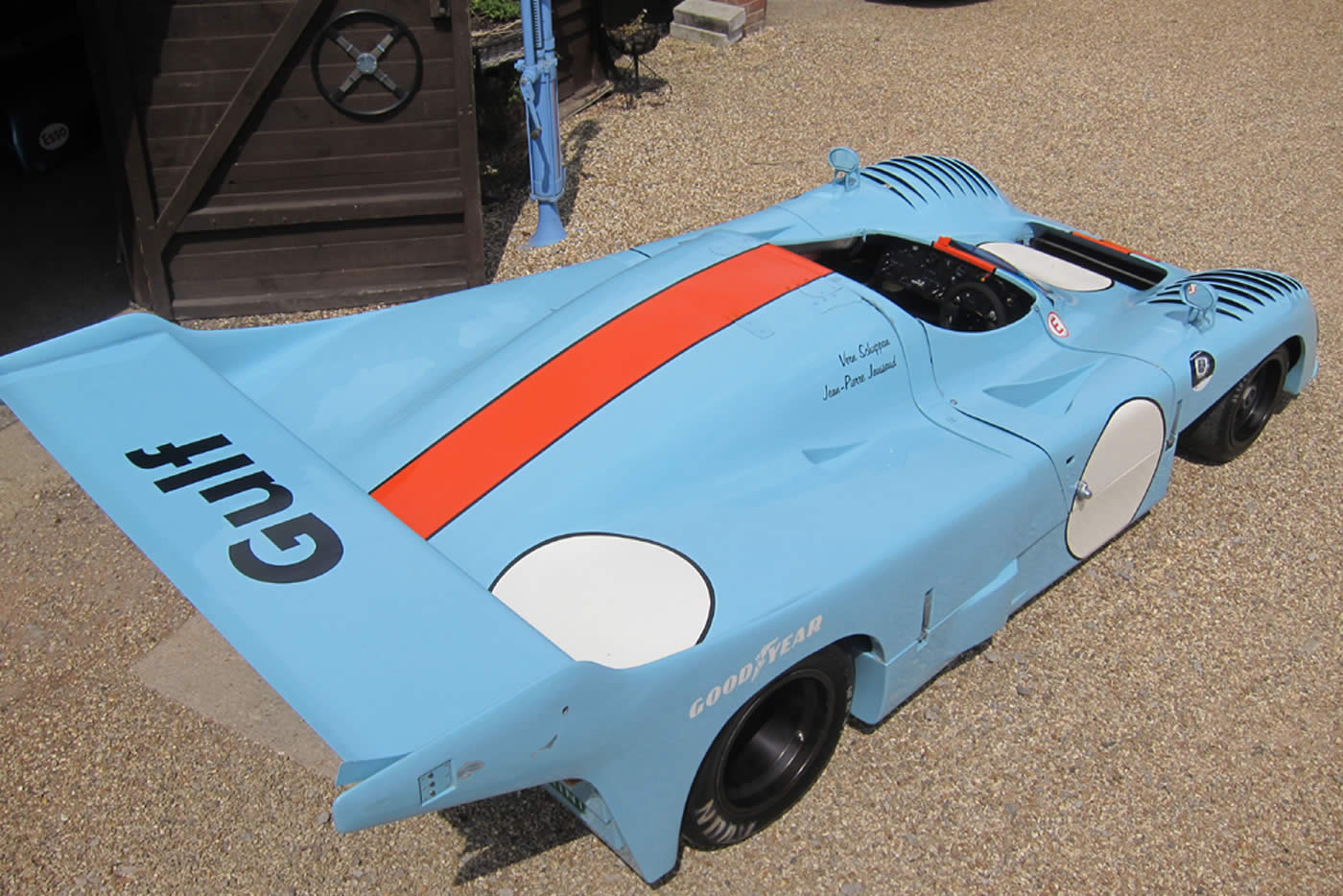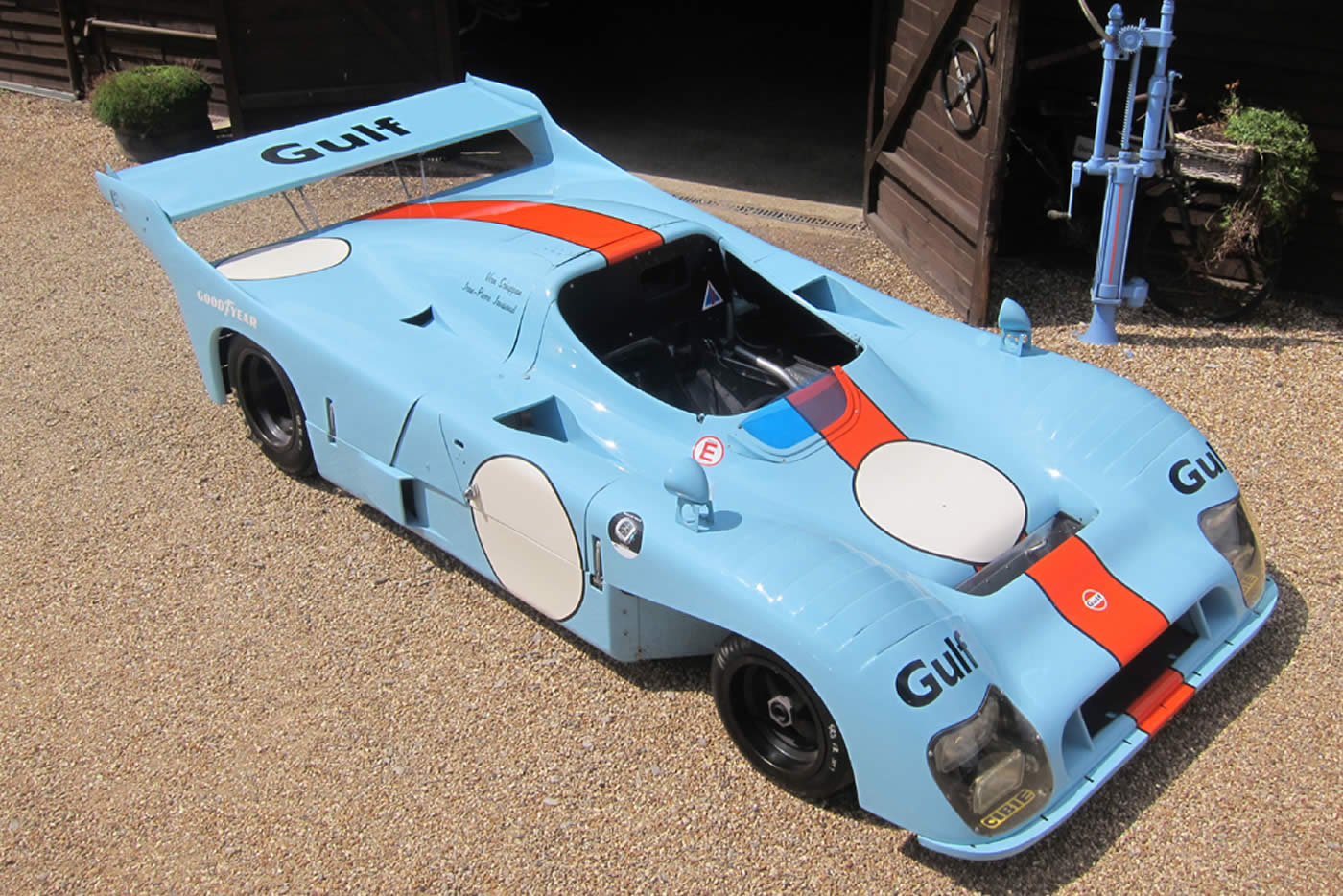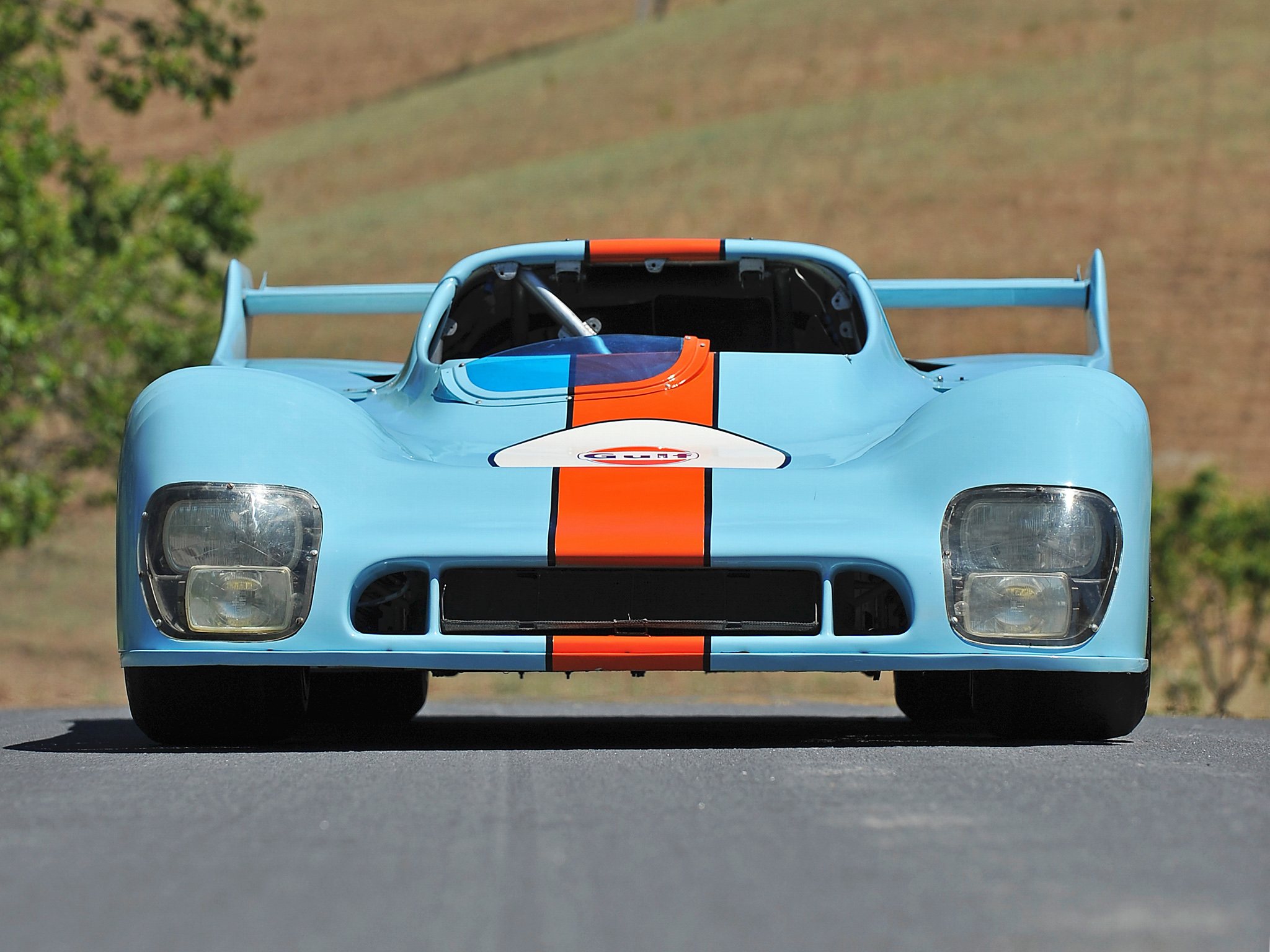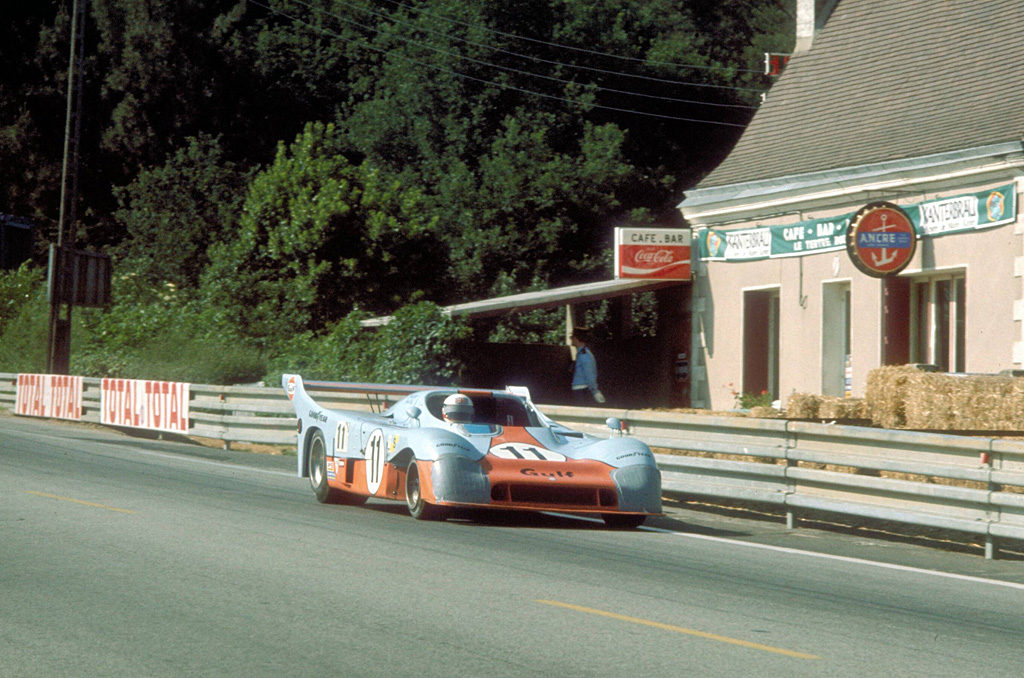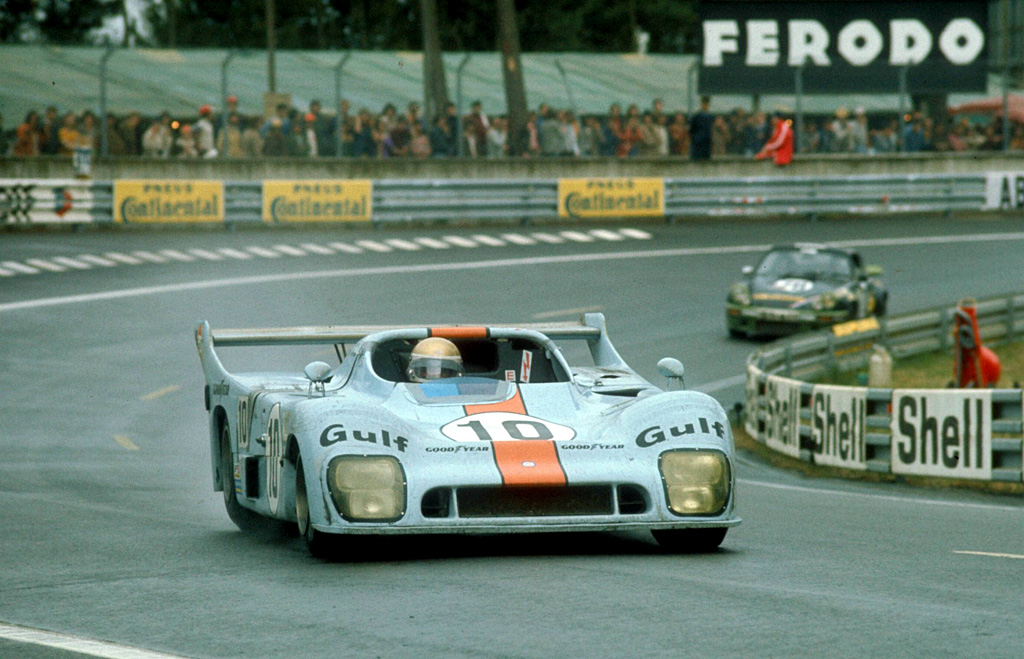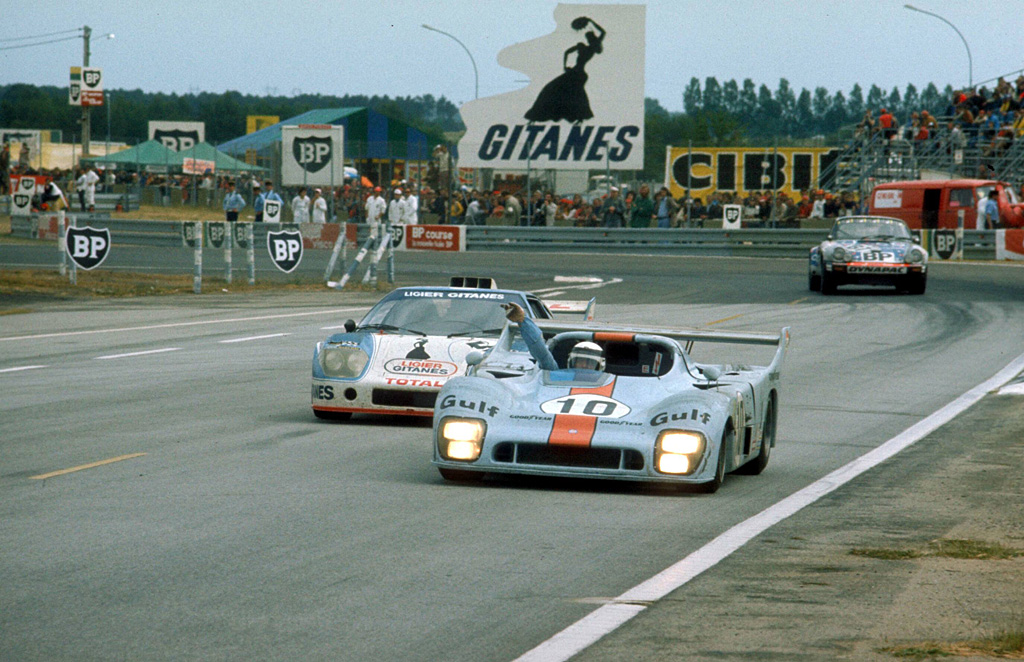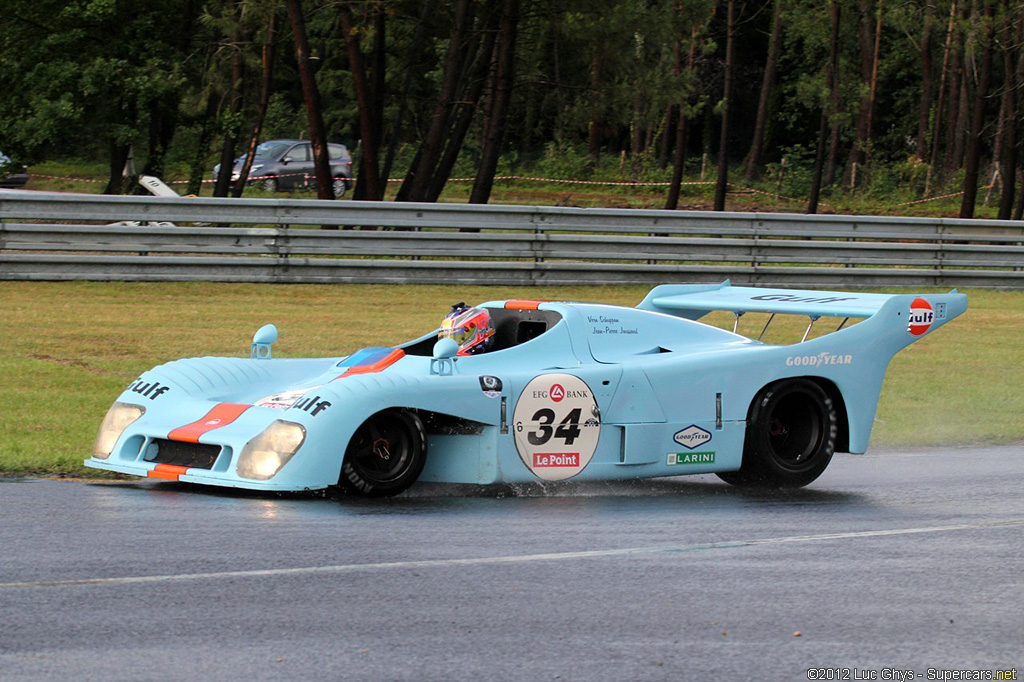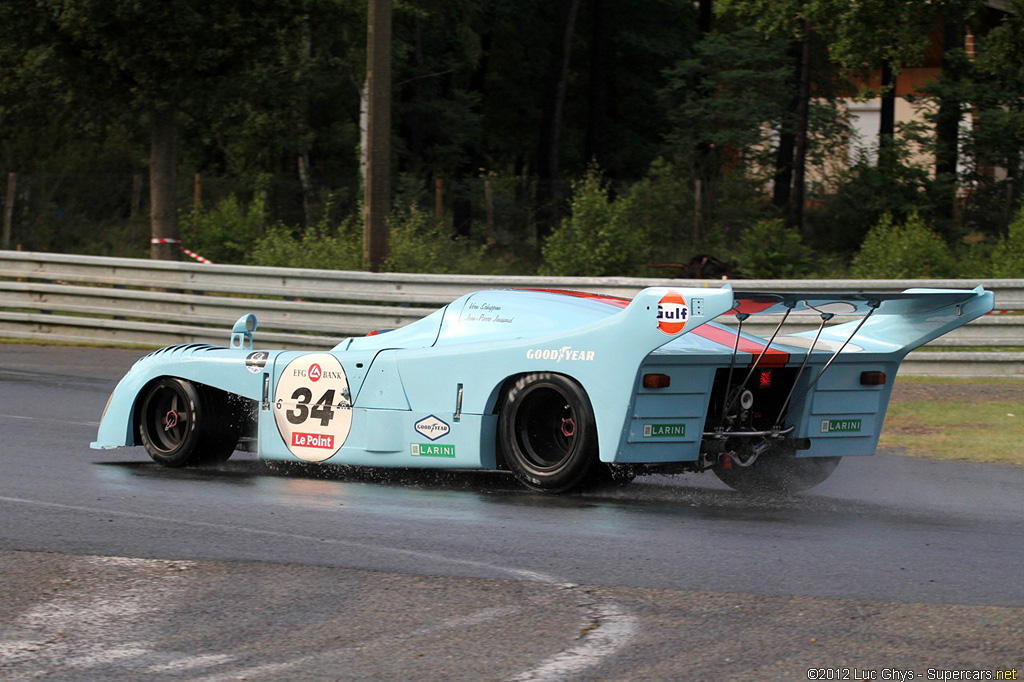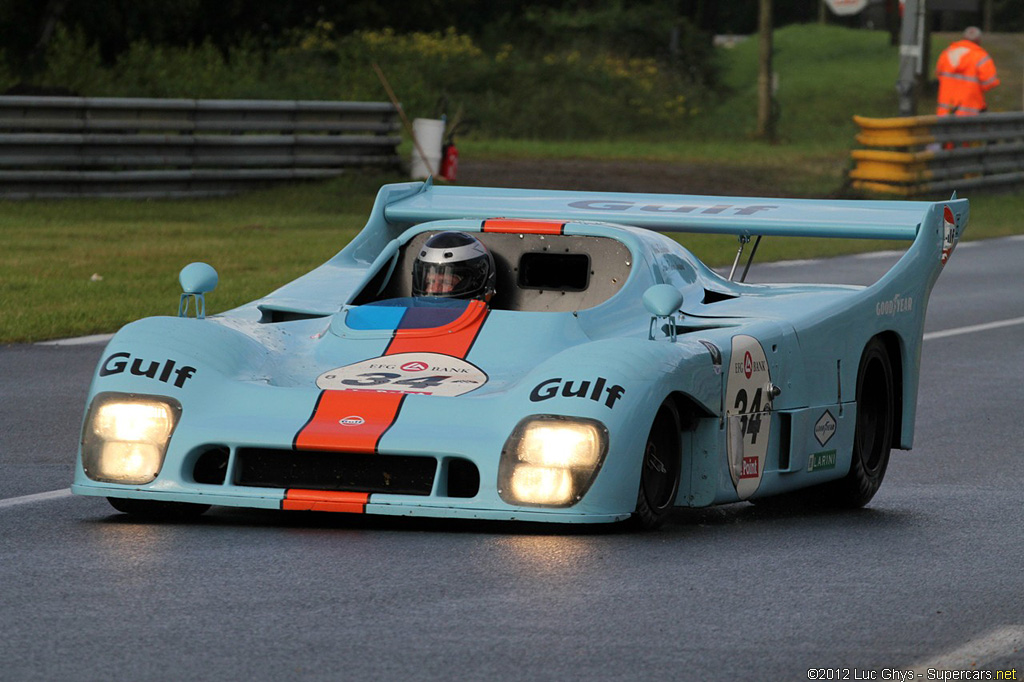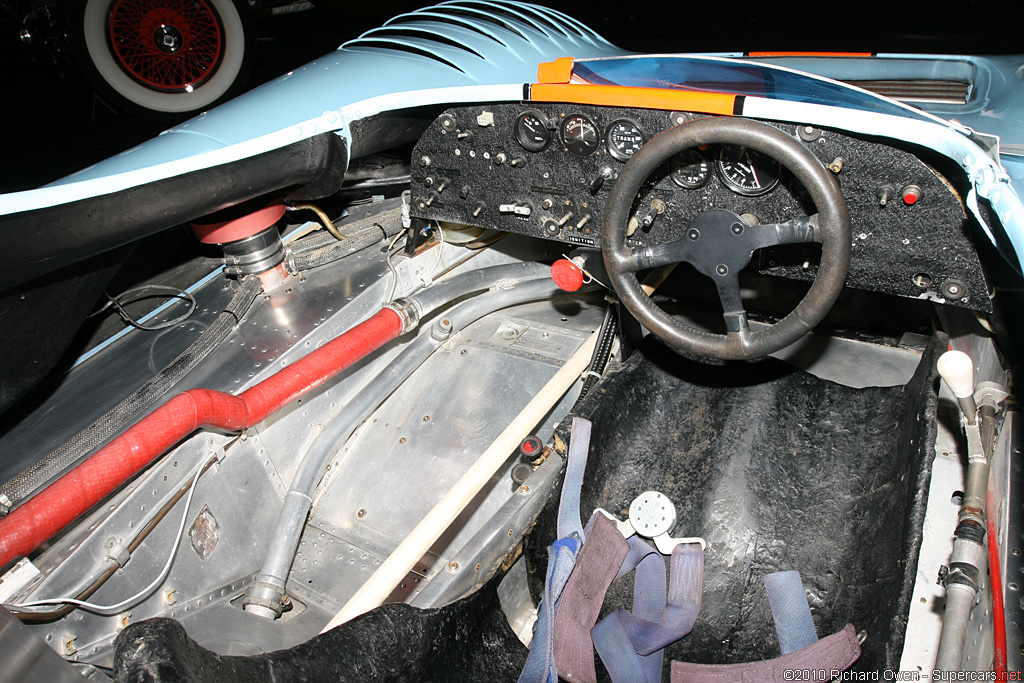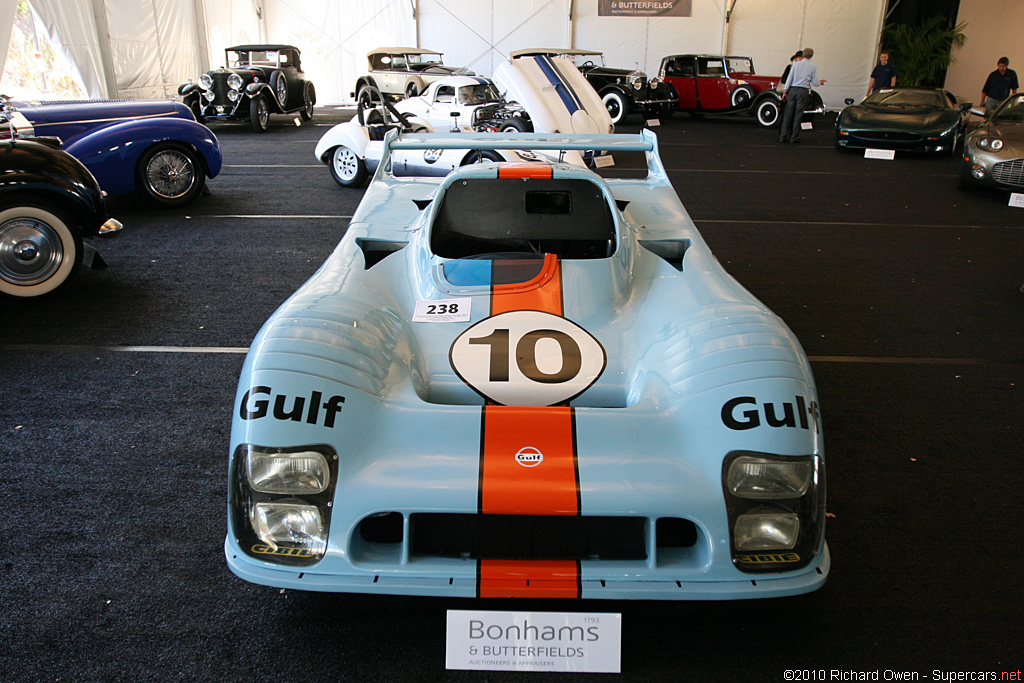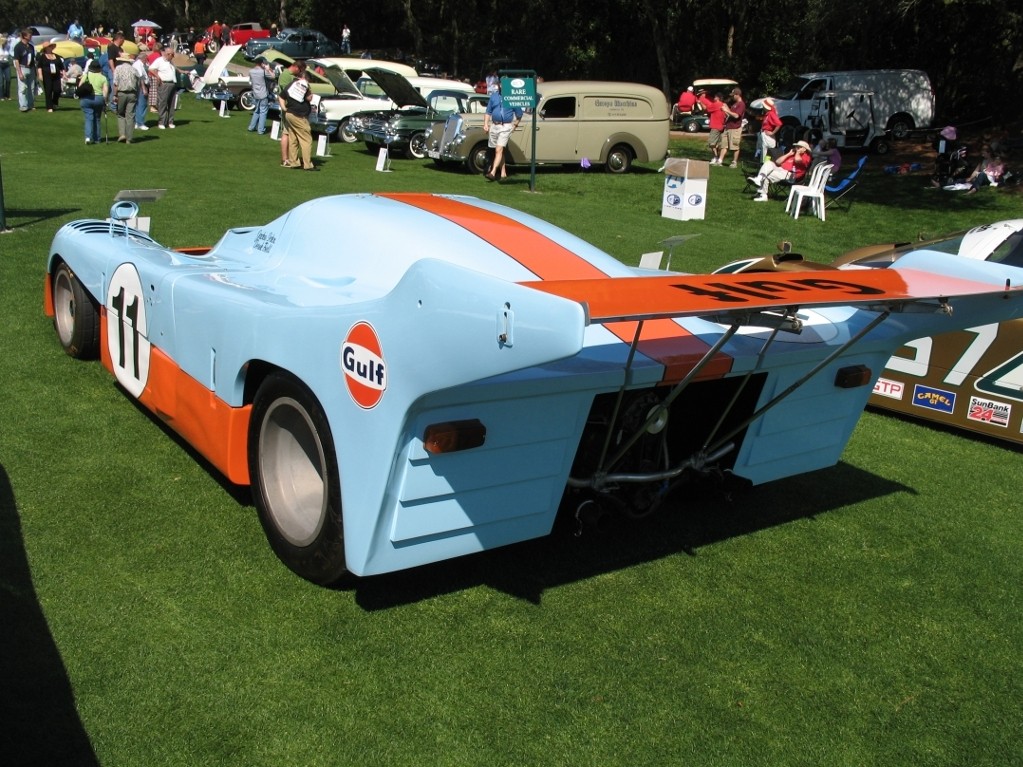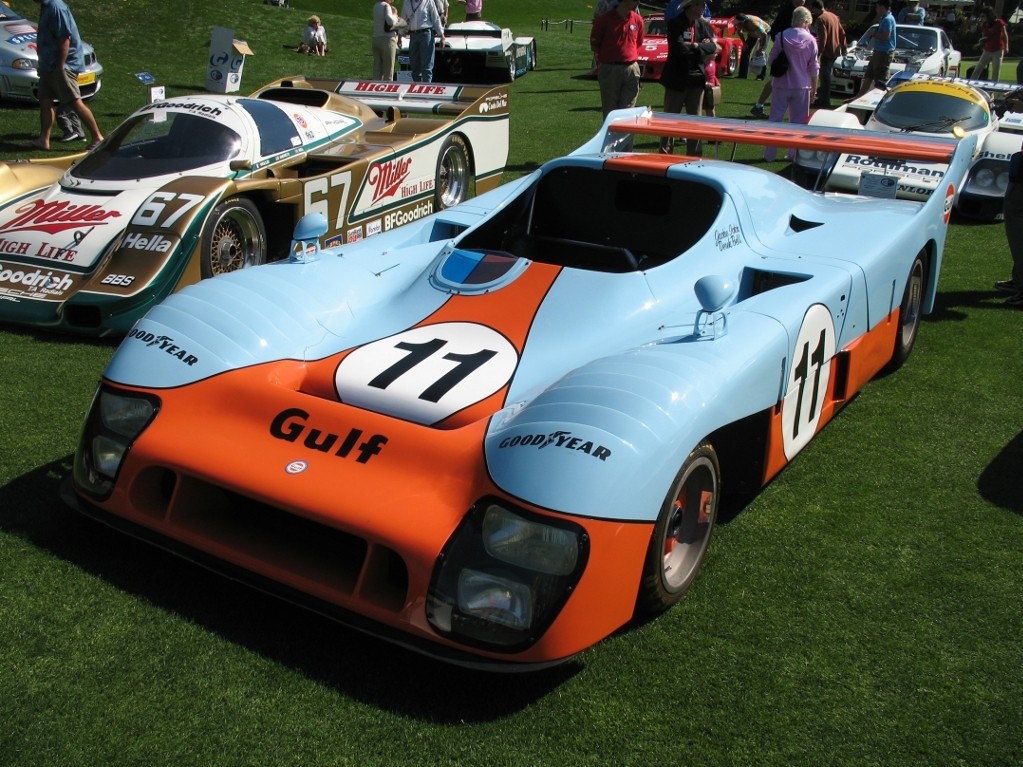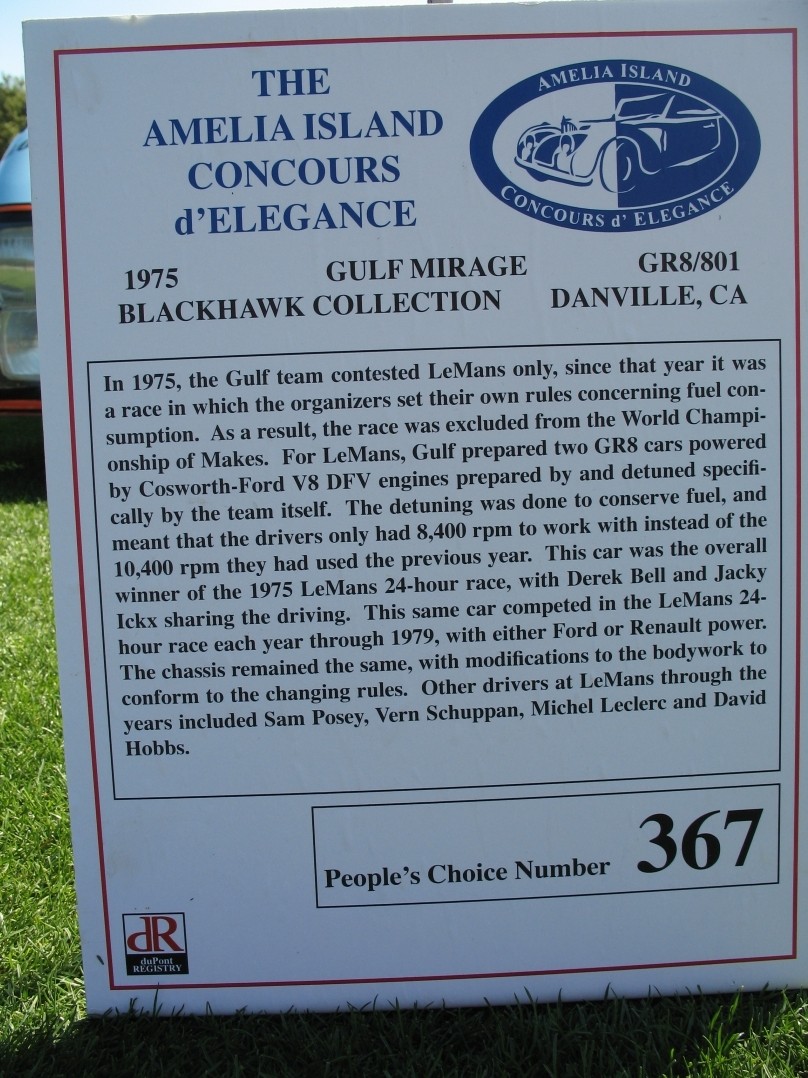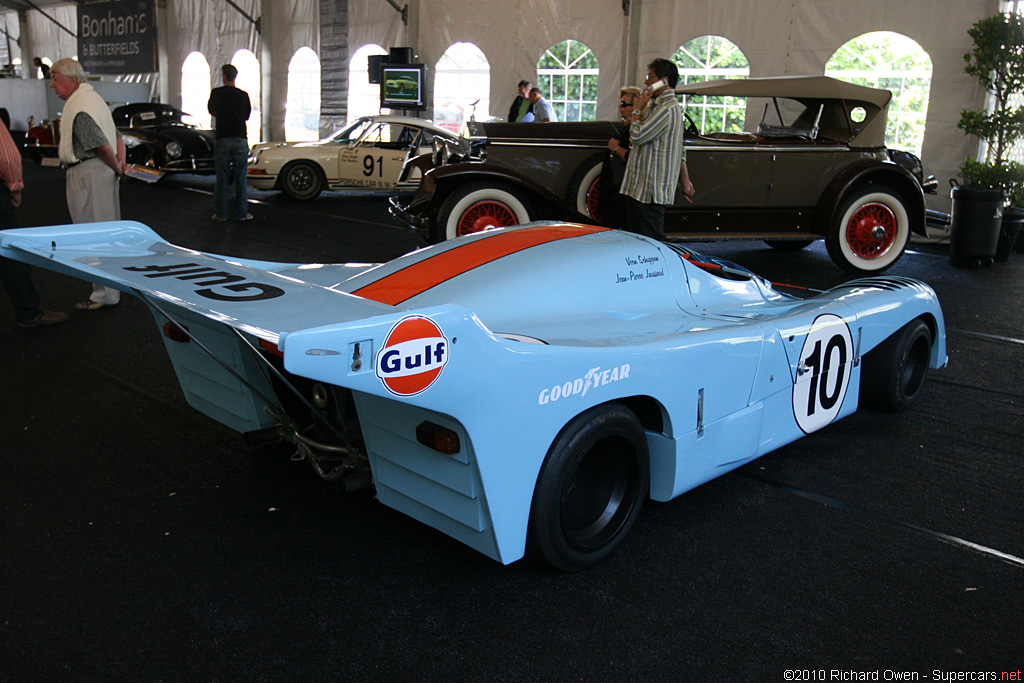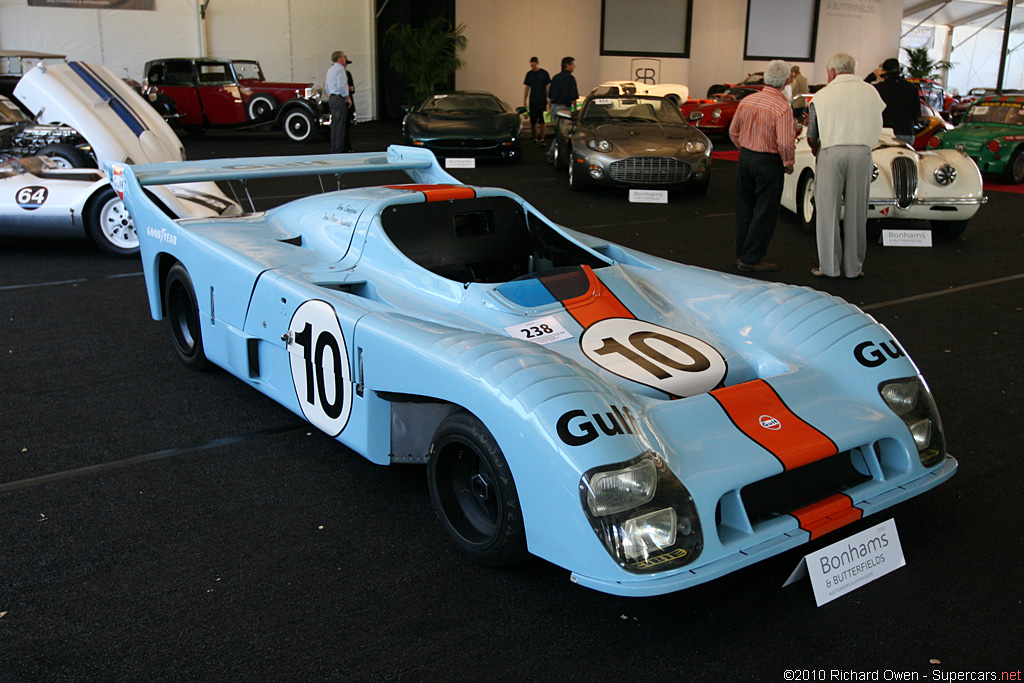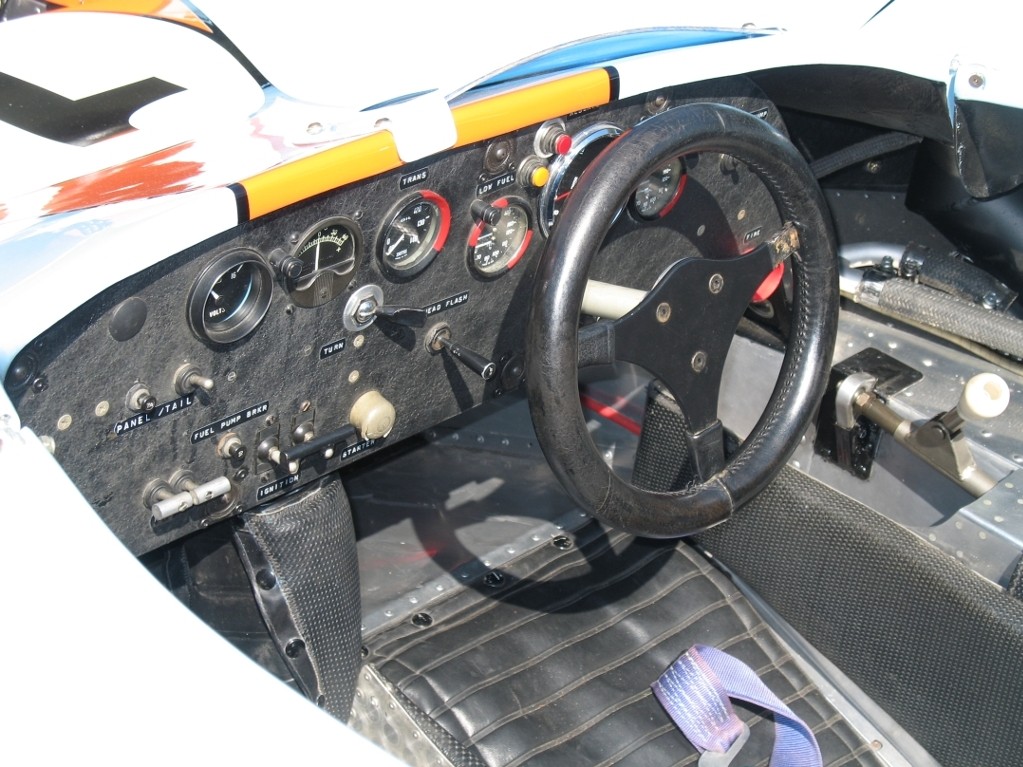1975 Gulf-Mirage GR8
In 1975, Ford, Gulf & J.W. Automotive took a resounding overall victory at the 1975 running of the 24 Hours of Le Mans. Drivers Derek Bell and Jacky Ickx piloted their Mirage GR8 a total of 336 laps, beating the Ligier JS2 by just 1 lap. In third place was the second Mirage GR8.
Engineering for the GR8 largely came from the Mirage prototypes which immediately preceded this model. These were designed by Len Terry and evolved from season to season. For 1975, the Gulf Oil team led by John Weyer and John Horsman focused almost exclusively on the 24 endurance at Le Mans.
Horsman describes the car: “We wanted a longer body to reduce drag and Len drew a new chassis with 6-inch-longer wheelbase, giving more room for things like oil tanks. JW and I sketched the body shape, and our machinist, Brian Holland, made a ¼-scale clay body shape to the sketch. We made a few minor changes before the model was sent to FKS Fiberglass in Poole who made the panels.
Despite a rather large frontal area the GR8 was a pretty good shape, with a low drag coefficient and (for its day) good downforce from the rear wing. It was a good car for Le Mans, easy to drive, with no vices. We had modified various areas to lower the fuel consumption to meet Le Mans’ required minimum 20-lap distance between refueling stops. In fact we went too far as the car could do 22 laps…but it’s nice to have a safety cushion in a 24 hour race.”
During the race Derek Bell and Jacky Ickx put on commanding lead whlie the second car suffered from electrical system problems in the rain and the leading car had its exhaust swapped.
Powering all three cars on the Podium at the 1975 24 Hours of Le Mans was Ford Cosworth DFV.
John describes the effect the engine had on the design: “The Cosworth DFV engine had been designed as an integral chassis member for Formula 1, forming the rear half of the car structure. But, from our original Mirage M6, Len Bailey wisely included three-tube braces along each side. Over 24 hours the DFV’s inherent vibration was very destructive. At Le Mans in 1975 it fractured the engine’s lower mounting blocks, putting all the rear-end load onto Len’s tripod frames on each side. This light steel framework then held both our cars together during the last half of the race. Otherwise they would literally have collapsed in half like a torpedoed ship! This lower mounting was remade in steel for the ’76 race and both cars finished without trouble in that area.”


